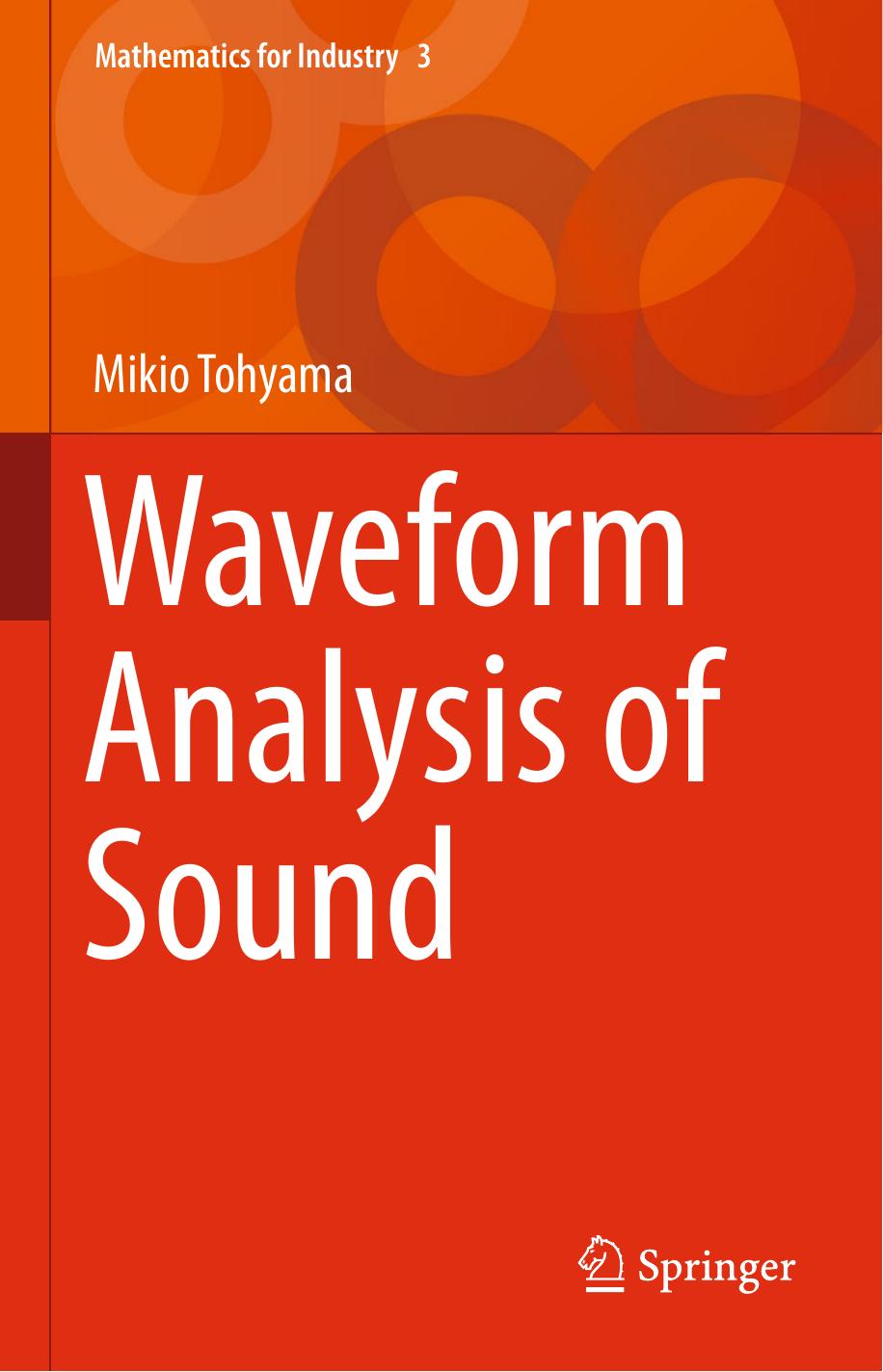Waveform Analysis of Sound by Mikio Tohyama

Author:Mikio Tohyama
Language: eng
Format: epub, pdf
Publisher: Springer Japan, Tokyo
However, the following query might be posed from a perceptual point of view. Figure 5.12 shows a case when the frequency ratio of the fundamentals for the three harmonic components is given as 4: 5: 6(h: i: j) as for a major tonic chord. Therefore, the fundamental frequency is just two octaves lower than that of the lowest fundamental of the three harmonic sequences. Probably, the estimated fundamental frequency might not be acceptable as an estimation of pitch perception from a perceptual point of view.
The methods for signal signature analysis must be chosen depending on the purpose. Again, suppose three sinusoidal frequency components such as f c , f c ±Δ f, are given. If the goal of the signal analysis is estimating the period (fundamental frequency) or beat, then analyzing Δ f is important. Beating is central in tuning musical instruments, such as a piano. The beat period is given as 1∕Δ f. Alternatively, the center frequency might be a significant component needing to be definitively estimated, from a perceptual point of view, when estimated periods appear not to be good measures of perceptual pitch perception.
However, the central component never represents the envelope that yields the beats. Therefore, if the entire waveform is the main interest, independent of the observation intervals of the waveform, the three sinusoidal components must be detected separately, even if the three components exist very closely on the frequency scale. It seems that the ear is good at detecting the signature appropriately.
Download
This site does not store any files on its server. We only index and link to content provided by other sites. Please contact the content providers to delete copyright contents if any and email us, we'll remove relevant links or contents immediately.
| Automotive | Engineering |
| Transportation |
Whiskies Galore by Ian Buxton(41524)
Introduction to Aircraft Design (Cambridge Aerospace Series) by John P. Fielding(32883)
Small Unmanned Fixed-wing Aircraft Design by Andrew J. Keane Andras Sobester James P. Scanlan & András Sóbester & James P. Scanlan(32569)
Craft Beer for the Homebrewer by Michael Agnew(17927)
Turbulence by E. J. Noyes(7690)
The Complete Stick Figure Physics Tutorials by Allen Sarah(7135)
Kaplan MCAT General Chemistry Review by Kaplan(6588)
The Thirst by Nesbo Jo(6432)
Bad Blood by John Carreyrou(6270)
Modelling of Convective Heat and Mass Transfer in Rotating Flows by Igor V. Shevchuk(6219)
Learning SQL by Alan Beaulieu(6029)
Weapons of Math Destruction by Cathy O'Neil(5820)
Man-made Catastrophes and Risk Information Concealment by Dmitry Chernov & Didier Sornette(5641)
Digital Minimalism by Cal Newport;(5384)
Life 3.0: Being Human in the Age of Artificial Intelligence by Tegmark Max(5181)
iGen by Jean M. Twenge(5151)
Secrets of Antigravity Propulsion: Tesla, UFOs, and Classified Aerospace Technology by Ph.D. Paul A. Laviolette(4974)
Design of Trajectory Optimization Approach for Space Maneuver Vehicle Skip Entry Problems by Runqi Chai & Al Savvaris & Antonios Tsourdos & Senchun Chai(4837)
Electronic Devices & Circuits by Jacob Millman & Christos C. Halkias(4739)
